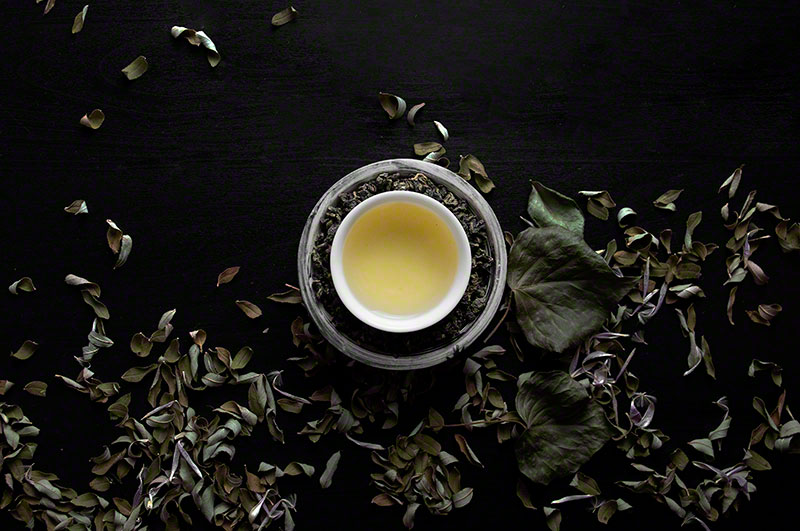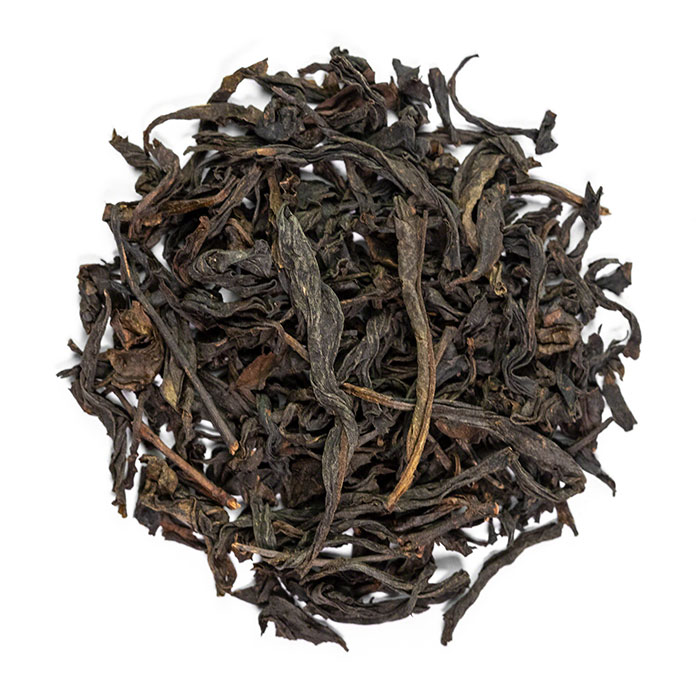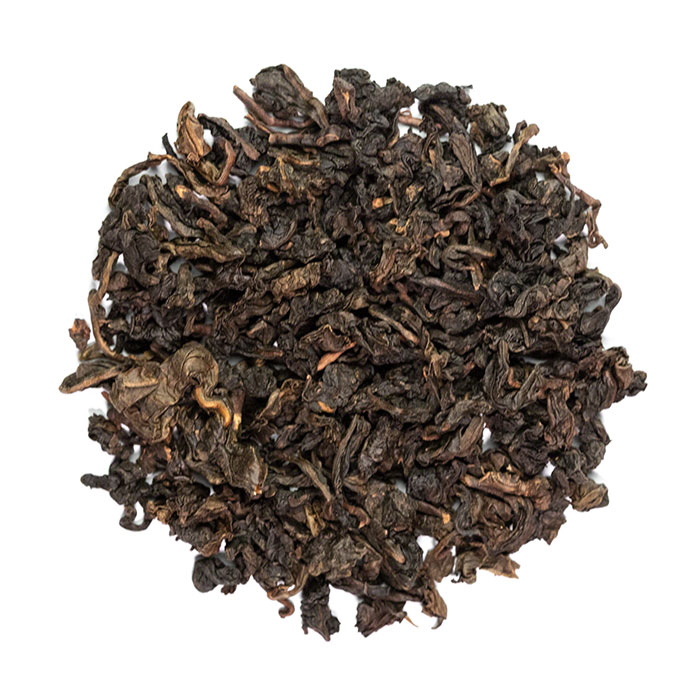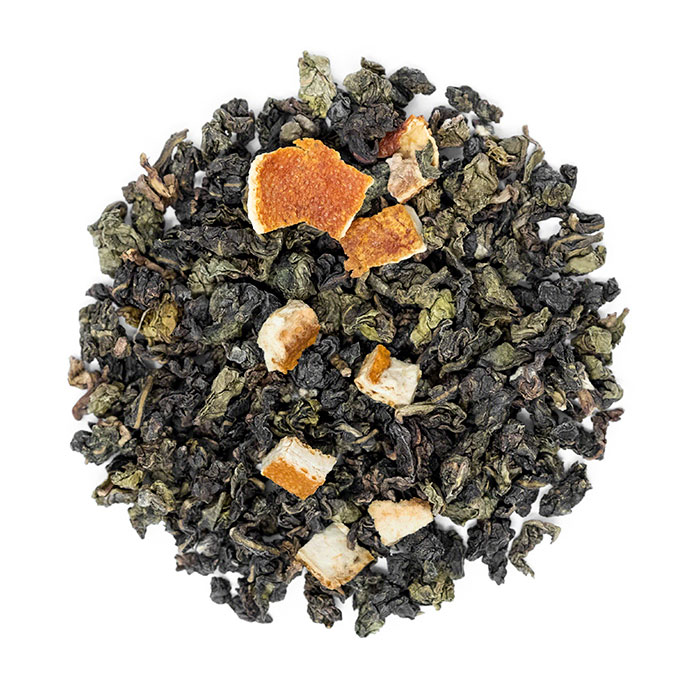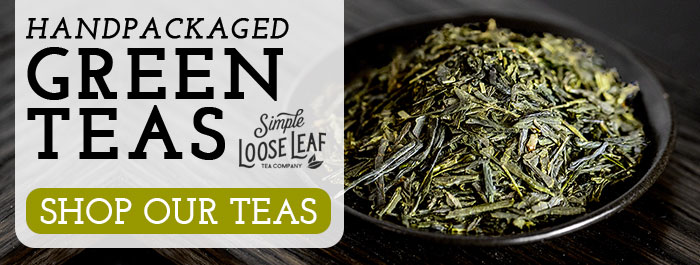15 Unique Benefits of Oolong Green Tea
Tea is the healthiest drink in the world. Although this statement might sound exaggerated, numerous studies show that it might, in fact, be true. However, all teas are different, and some might offer more benefits than the others. This will not only depend on the tea category, but the type and processing methods too. One study showed that tea in general has much higher antioxidant capacities than most “medicinal plants, edible macro-fungi, vegetables, fruits, fruit wastes (peels and seeds), and wild fruits.[1]”
Learn what are the benefits of oolong tea and is it better than other tea types.
What is oolong tea?
Oolong tea category is the widest and most versatile category of tea. Just like all real types of tea, oolong tea is made from the leaves, buds and branches of camellia sinensis plant. Oolong tea falls between green and black tea, with oxidation rate anywhere between around 10 to 90%. Some oolong teas may be almost fully oxidized, making them very close to black tea, while others are green and light. Unlike green tea, oolongs can contain full branches with leaves and buds. Flavor ranges from light floral tones to cinnamon, toasted bread, ripe fruit, and caramel notes.
The most popular oolong tea usually comes from Mainland China and Taiwan. Other countries like Thailand, Vietnam, Japan and India produce oolong tea too. Each type is unique with flavor, scent and leaves matching the terroir. Taiwan is famous for its high mountain oolongs, all grown at altitudes higher than 1000 meters. High altitude, unique climate and cool weather bring complex floral, light and sweet flavors, often lasting for up to 10 infusions. Chinese dan cong teas are famous for hundreds of different notes and are harvested from big tea trees, rather than tea bushes. Wu Yi oolongs like Qi Lan and Red Robe oolong are famous for mineral notes, and are often more oxidized.
Why is oolong tea healthy?
Oolong tea contains both green tea and black tea compounds. Because it’s half-oxidized, it has more catechins than black tea. However, antioxidant activity in tea doesn’t come only from catechins – “caffeine, theaflavine, gallic acid, chlorogenic acid, ellagic acid, and kaempferol-3-O-glucoside[2]” are anti oxidative compounds as well. One Chinese study evaluated anti-oxidative capacity of 30 different teas, and showed that oolong tea on average has a higher antioxidative capacity than dark, white or black teas, and even 100% higher than some green teas[3]. In fact, the mean value of total phenolic content in green tea was only slightly higher than in oolong tea.
During oxidation compounds in tea leaf change their structure. To benefit from the antioxidative activity it’s better to opt for greener, less oxidized oolong tea such as Ti Kwan Yin. If the oxidation level is not included in the description, both color of tea leaves and tea infusion might help you in guessing the oxidation level. Darker leaves and reddish tea liquor are a sign of higher oxidation.
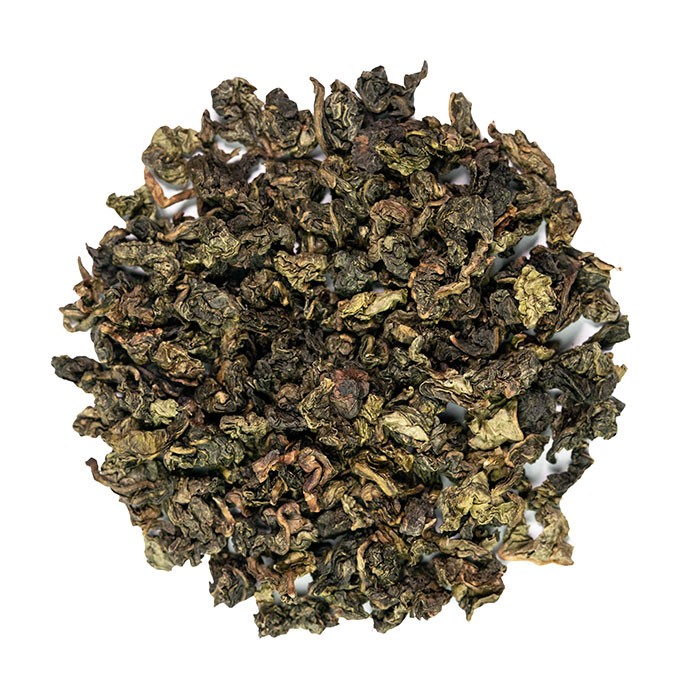
Ti Kwan Yin oolong tea
Oolong tea is semi-oxidized, so it contains EGCg too. One Chinese study showed that a gram of dry oolong tea leaf has around 20-30 mg of EGCg. Most black teas included in the study had less than 1 mg per one gram, and green teas from around 30-60[4]. Most oolong teas offer at least 5-10 great infusions, increasing the total amount of extracted nutrients. In fact, you can brew most of them with a very hot, almost boiling water, and still enjoy the great flavor.
Oolong tea benefits
1. Aiding weight loss
Oolong tea is one of the most popular weight-loss teas for a reason. Study showed that oolong tea might help in reducing a “high fat diet-induced gain in weight, hepatic lipids, and white adipose tissue weights.[5]” Oolong tea may be very helpful in preventing obesity[6] too. In fact, it may even help without any additional effort or intensive exercise. Chinese study on 102 over-weight and obese patients showed that 70% of patients lost 1 kg in only 6 weeks of daily oolong tea consumption. Furthermore, almost one quarter of patients, 22%, lost up to 3 kg[7]. Furthermore, studies have showed that drinking full-strength oolong tea may increase energy expenditure and fat oxidation by 12%[8].
2. Lowering blood pressure
35 years ago, Japanese scientists developed a special type of tea called GABA. This oxidized oolong has at least 150mg of amma-aminobutyric acid) per 100 grams of dry leaf[9], more than other tea types. Studies showed that GABA tea may reduce high blood pressure by 14-17% compared to controlled groups.
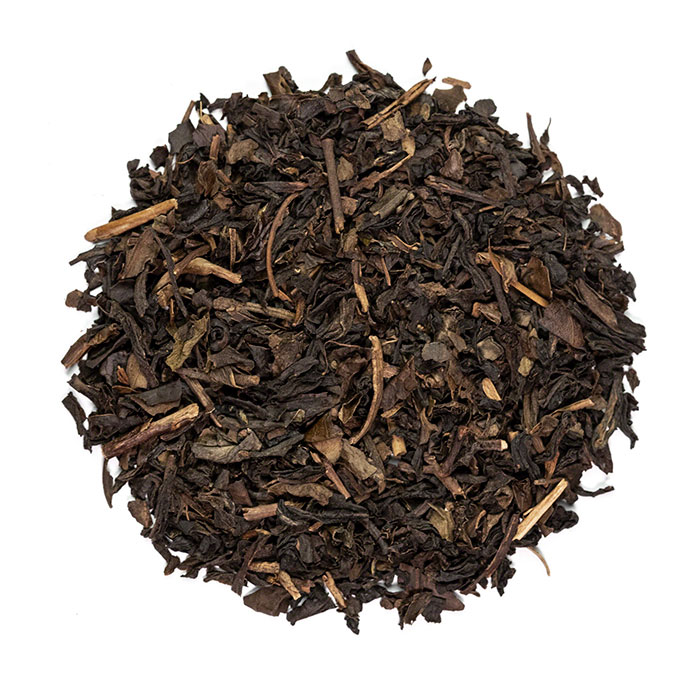
Formosa Oolong tea from Taiwan
3. Improving sleep
Research showed that GABA in combination with L-theanine, might be cause longer sleep and reduce sleep latency. Oolong contains both of them. Regular oolong tea has about 0.25 mg of GABA per 200 ml, while the levels in GABA-enriched tea are around 2 mg per 200 ml[10].
4. Anti-hyperglycemic effect
Polyphenols in oolong tea might be helpful in inhibiting digestive enzyme α–amylase.[11] Over-activity of α–amylase is responsible for high blood sugar levels, making oolong tea potentially helpful to people suffering from type 2 diabetes.
5. Improving gut microbiome
A disbalance in gut bacteria is a trigger for many health problems—from inflammatory bowel diseases, allergies, metabolic disorders and liver disease[12]. Oolong tea may help in improving the balance of healthy bacteria and provide support, especially when eating high-fat diet[13].
6. Fighting cancer
Studies showed that polyphenols in oolong tea might inhibit breast cancer cells growth[14]. Another study discovered that Chinese dan cong tea “may act as a substitute for natural antioxidants and as a promising anticancer agent due to its protective effect on human health.[15]” Drinking oolong tea regularly may help in reducing the risk of ovarian cancer too[16].
7. Decreasing vascular inflammation
All real teas may be beneficial for heart healt. Sturies showed that oolong may help in decreasing vascular inflammation caused by diet high red meat,[17] therefore, reducing the risk of cardiovascular diseases.
8. Protecting brain
Drinking tea regularly may help in protecting against neurodegenerative diseases such as Parkinson’s disease. Studies showed that drinking 3 cups of tea per day for 10 years might reduce the risk even up to 28%. Scientists say this is because of EGCg and its ability to fight free radicals[18].
9. Reducing cholesterol levels
Consuming oolong tea on a regular daily basis may impact cholesterol levels. One clinical trial showed that drinking 600 ml of oolong tea per day decreases LDL or bad cholesterol by 6.69% and may reduce the risk of developing dyslipidaemia[19] and the risk of heart disease. In another trial, people who drank 1000 ml of oolong tea per day had reduced levels of both LDL and hemoglobin A1c, linked to the risk of developing type 2 diabetes.
10. Improving bone mineral density
Although this might not be something you often think about when it comes to benefits, bone mineral density is very important in prevention of osteoporosis and fractures. Polyphenols in tea may help to increase bone mass and bone strength.[20]
11. Reducing dental plaque and preventing tooth decay
Drinking oolong tea before and after a meal might help in keeping your teeth clean and healthy. One study showed that rinsing mouth with oolong tea exact may “significantly inhibit plaque deposition[21]”.
12. Increases alertness
Same as all other real teas, oolong tea also contains caffeine. One Chinese research showed that oolong tea (Ti Kwan Yin) has less than half the amount of caffeine in white tea and about 26% of the pu’erhs caffeine content. However, another study examining 37 commercially available tea samples showed that oolong can have even double the amount of caffeine of Earl Grey or Assam and Breakfast teas[22]. Teas with more caffeine had more L-theanine too, an amino acid responsible for a calming effect. Result? Increased alertness but no jitters.
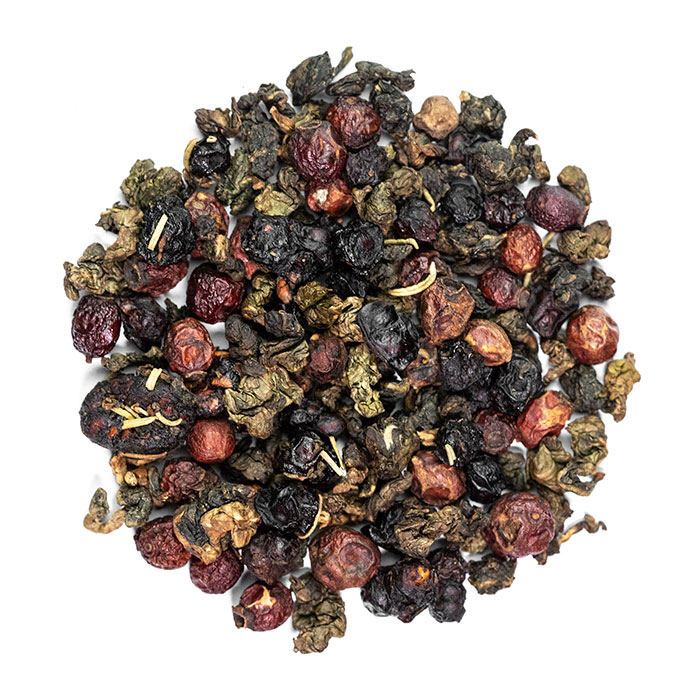
Northern Garden Oolong Tea
13. Reducing the risk of stroke
Both oolong and green tea may reduce the risk of ischemic stroke. Scientific data says that individuals drinking 1 cup of green or oolong tea per day were less at risk from ischemic stroke than non-regular tea drinkers, and those who drink 3 cups daily 21% lower risk than those who drink only one[23].
14. Improving mood and de-stressing
L-theanine in tea may help you improve general mood and help de-stress. This amino acid is present in almost all tea types except in pu’erh where the levels are negligible. One study showed that white, green and oolong teas on average have a higher value of L-theanine than black tea. A trial on 16 healthy volunteers showed that L-theanine caused decrease in anxiety and lowered high blood pressure caused by high-stress situations[24].
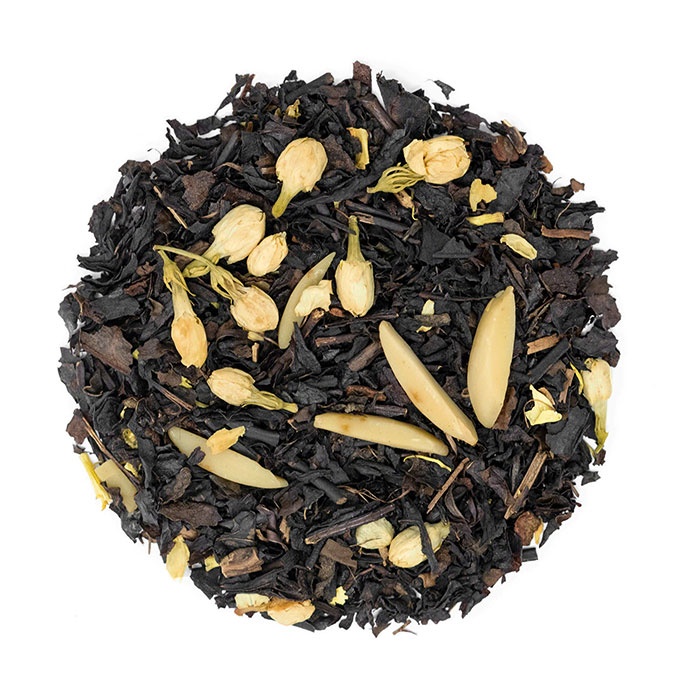
Creme Brulee Oolong tea
15. Treating persistent eczema
A clinical trial from Japan proved that drinking 10 grams of oolong tea per day had significant results in 63% of patients with eczema after only 1-2 weeks of treatment.[25]
Are there any side effects?
Responsible drinking of any tea is likely to cause no side effects. However, oolong tea contains both caffeine and EGCg. A gram of dry oolong leaf is likely to have no more than 30 mg of EGCg, thus drinking up to 15 grams of tea per day will likely be safe. A gram of dry oolong tea leaf contains about 10-40 mg of caffeine, with the average around 20-30 mg per gram. Therefore, drinking around 15 grams of dry leaf should be safe. For example, western brewing methods use 2-3 grams of tea, while for the eastern technique you will need at least 5-7 grams per brewing session. However, both caffeine and EGCg require high water temperature and very long steeping to be “fully” extracted. If you are sensitive to caffeine, avoid drinking too much tea.
Read more about oolong tea:
Disclaimer: The purpose of this article is not to diagnose or treat any diseases, or to replace an opinion of a professional doctor. Never self-treat any diseases, or drink large quantities of tea, real or herbal, if you are suffering from serious diseases, are pregnant or breastfeeding. As every person is different, it’s impossible to make a general statement about the benefits or side-effects.
References:
[1] https://www.ncbi.nlm.nih.gov/pmc/articles/PMC6617242/
[2] https://www.ncbi.nlm.nih.gov/pubmed/31216700
[3] https://www.ncbi.nlm.nih.gov/pmc/articles/PMC6617242/
[4] https://www.ncbi.nlm.nih.gov/pmc/articles/PMC6617242/
[5] https://www.ncbi.nlm.nih.gov/pubmed/31062778
[6] https://www.ncbi.nlm.nih.gov/pubmed/30622452
[7] https://link.springer.com/article/10.1007/s11655-009-0034-8
[8] https://academic.oup.com/jn/article/131/11/2848/4686734
[9] https://tching.com/2010/10/unique-health-benefits-of-organic-gaba-oolong-tea/
[10] https://www.ncbi.nlm.nih.gov/pmc/articles/PMC6443991/
[11] https://www.ncbi.nlm.nih.gov/pubmed/25222598
[12] https://www.ncbi.nlm.nih.gov/pmc/articles/PMC5756763/
[13] https://www.ncbi.nlm.nih.gov/pubmed/31623411
[14] https://www.ncbi.nlm.nih.gov/pubmed/31353716
[15] https://www.ncbi.nlm.nih.gov/pubmed/30574049
[16] https://www.ncbi.nlm.nih.gov/pubmed/23107758
[17] https://www.ncbi.nlm.nih.gov/pubmed/31287296
[18] https://www.ncbi.nlm.nih.gov/pmc/articles/PMC4055352/
[19] https://www.ncbi.nlm.nih.gov/pubmed/24229494
[20] https://www.ncbi.nlm.nih.gov/pmc/articles/PMC3831545/
[21] https://www.ncbi.nlm.nih.gov/pubmed/8033186
[22] https://www.ncbi.nlm.nih.gov/pmc/articles/PMC4787341/
[23] https://www.ncbi.nlm.nih.gov/pmc/articles/PMC4055352/



